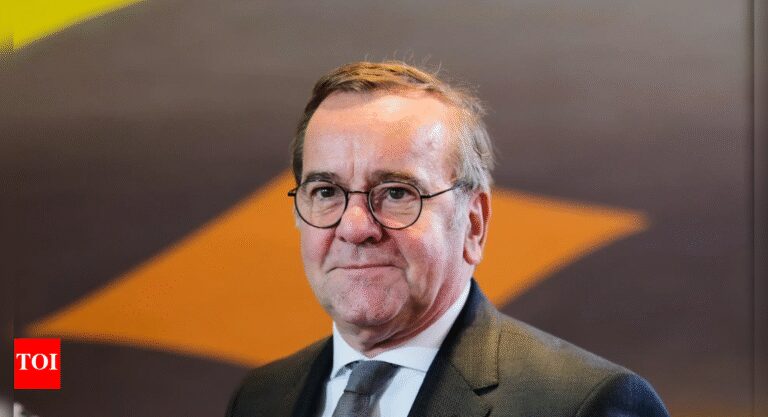On Monday in Canada’s capital, Ottawa, Norwegian and German defense ministers Tore Sandvik and Boris Pistorius were awarded military honors by Canadian Defense Minister David McGuinty at the beginning of what could informally be described as a sales presentation.Sandvik and Pistorius hope to persuade the Canadians to join a joint German-Norwegian project starting in 2023 to procure standardized modern submarines. We hope to secure orders from Canada for up to 12 units over the next 10 years.This would be a big boost to the German and Norwegian companies building these submarines. As McGuinty pointed out, if Canada were to participate, production numbers could increase significantly, which would reduce the cost of each submarine.The German delegation believes that entering into a partnership in submarine construction would be a clear demonstration of increased North Atlantic naval cooperation. Last year, Germany, Norway and Canada formally established the Maritime Security Partnership, and Denmark joined it this year.
new cold war
After the end of the Cold War, submarines in the Atlantic were no longer considered a priority, and Germany significantly reduced its fleet.However, Russia is once again seen as a significant threat in the Baltic Sea and North Atlantic, and its submarine fleet is expanding. And the focus isn’t just on submarines. German Defense Minister Pistorius said NATO countries were stepping up efforts to protect critical infrastructure such as undersea cables and offshore wind farms and to detect Russian submarines in the North Atlantic.“Russia’s ambitions do not stop in eastern Ukraine or in the east,” he said. “Civil and military communications lines across the North Atlantic are critical to our economy and defense alliances with Canada and the United States.”
Tracking Russian submarine from Iceland
The German Navy plans to deploy more ships and increase its presence in waters around the Arctic Circle. P-8 Poseidon, a special reconnaissance aircraft capable of detecting long-range submarines, will be deployed more frequently from Iceland.Mr Pistorius co-signed a letter of intent to this effect with Icelandic Foreign Minister Katrin Gunnarsdottir during a brief visit to Reykjavík on Sunday.The U.S. Navy operates the massive Keflavik base in Iceland, which monitors the North Atlantic Ocean. NATO countries are taking turns sending reconnaissance planes to Keflavik. The US closed the base in 2006, but reopened it in 2016 in light of the growing threat from Russia.Although Iceland is a NATO member, it does not have its own military, so outside aid is welcome. In return, they provide logistical support in ports, accommodation, and training areas for German soldiers.
Rare earths and defense
During the talks in Canada, Pistorius also promoted expanded strategic and economic partnerships. The partnership was first formally formalized in August when Canadian Prime Minister Mark Carney was in Berlin to meet with German Chancellor Friedrich Merz.For example, Canada could increase its exports of liquefied petroleum gas (LPG) to Europe. Germany is keen to retaliate by aiding in the exploration and extraction of coveted rare earth elements.These metals are primarily needed for high-end electronics and microchips. At the meeting in Ottawa, Canada commented that its European allies are keen to reduce their dependence on China and the United States.US President Donald Trump has imposed high tariffs on imports from Canada. Until recently, the United States was Canada’s largest customer for manufactured goods and raw materials, accounting for 75% of trade volume. That is now starting to change. Canadian diplomats say Canada will focus more on Europe in the future.
Is the German Bundeswehr overextended?
When asked by a journalist whether there was a risk of the Bundeswehr (armed forces) being overstretched due to its involvement with a number of foreign countries in Lithuania, the Baltic Sea, Canada and Iceland, Pistorius answered with a smile. This is a “typical German question,” he said. “We have to bear more of the burden. We have to prove it,” he said, noting that Germany is Europe’s largest NATO member.Pistorius explained that Bundeswehr troops are not everywhere. You have to prioritize. “We are focused on the Baltic Sea, the Baltic region, the East, the Nordic countries, just as other NATO countries are focused on the South, the Mediterranean region, the Middle East and North Africa.”He further asserted, “We are in a position to manage all of this with our current personnel and the additional personnel we will add in the future.”
No decision yet
After the talks in Ottawa, Canada has not yet made a decision on its participation in the submarine project with Germany and Norway. In the coming days, Canadian Prime Minister Mark Carney is scheduled to visit South Korea, where he will make another major sales presentation. South Korea is also keen to secure an order for 12 new submarines from Canada.After a long day of negotiations, Canadian Defense Minister McGuinty addressed his German and Norwegian counterparts but did not go into details. “This partnership is active and evolving, and is essential to addressing today’s global challenges,” he said.German Defense Minister Pistorius said only, “It looks promising.”



